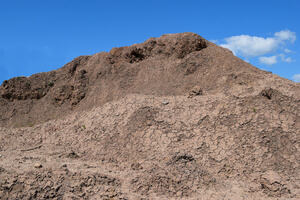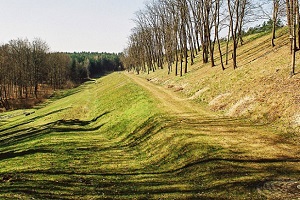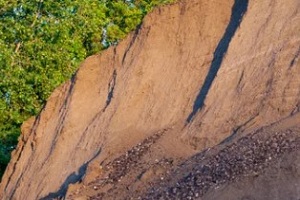 Fill dirt is a type of soil that is used to fill holes or low areas in the ground. It is typically made up of a mixture of sand, clay, and rock fragments, and can be used for a variety of purposes. In this blog post, we will discuss different ways to use fill dirt.
Fill dirt is a type of soil that is used to fill holes or low areas in the ground. It is typically made up of a mixture of sand, clay, and rock fragments, and can be used for a variety of purposes. In this blog post, we will discuss different ways to use fill dirt.
Leveling land
One of the most common uses for fill dirt is to level land. If you have an area of your property that is sloping or uneven, adding fill dirt can help level it out. This can be useful if you want to build a new structure, such as a shed or garage, or if you want to create a flat area for outdoor activities like playing sports or hosting events.
Filling in holes
Fill dirt is also commonly used to fill in holes. This can include holes left behind by trees that have been removed, sinkholes that have formed due to erosion, or holes dug for septic tanks or other underground structures. Adding fill dirt to these holes can help stabilize the ground and prevent further damage.
Building up a foundation
If you are building a new structure, such as a home or commercial building, you may need to build up the foundation in order to provide a stable base. This is often done by adding fill dirt to the site and compacting it to create a solid base. This can help prevent settling and shifting of the structure over time.
Creating a berm
 A berm is a raised area of land that is used for landscaping or as a barrier. Fill dirt can be used to create a berm by building up a mound of soil and then planting vegetation or adding decorative features like rocks or boulders. Berms can be used to create privacy barriers, to prevent erosion, or to add visual interest to a landscape.
A berm is a raised area of land that is used for landscaping or as a barrier. Fill dirt can be used to create a berm by building up a mound of soil and then planting vegetation or adding decorative features like rocks or boulders. Berms can be used to create privacy barriers, to prevent erosion, or to add visual interest to a landscape.
Building retaining walls
Retaining walls are structures that are used to hold back soil and prevent erosion. Fill dirt is often used to build retaining walls by filling in the space behind the wall and compacting it to create a stable base. The wall itself is then built on top of the fill dirt, using materials like concrete blocks, stones, or timber.
Landscaping
Fill dirt can be used for a variety of landscaping purposes. For example, it can be used to fill in low areas in a lawn or to create raised beds for gardening. It can also be used as a base for laying pavers or other types of hardscaping.
Building roads and driveways
Fill dirt is often used as a base for building roads and driveways. It is added to the site and compacted to create a solid base for the road or driveway. This can help prevent damage to the road or driveway over time, and can also help with drainage by providing a slope for water to run off.
Creating a drainage system
 If you have an area of your property that is prone to flooding or standing water, adding fill dirt can help create a drainage system. The fill dirt can be used to build up the area, creating a slope that allows water to run off. This can also be combined with the installation of a drainage pipe or culvert to further improve drainage.
If you have an area of your property that is prone to flooding or standing water, adding fill dirt can help create a drainage system. The fill dirt can be used to build up the area, creating a slope that allows water to run off. This can also be combined with the installation of a drainage pipe or culvert to further improve drainage.
Stabilizing slopes
If you have a slope on your property that is prone to erosion or landslides, adding fill dirt can help stabilize the slope. The fill dirt can be used to build up the slope and create a more gradual slope that is less likely to erode or shift. This can be especially important in areas with heavy rainfall or where the soil is prone to erosion.
Get in touch with the Fill Dirt Experts
Fill dirt can be used for a variety of purposes, from leveling land to building retaining walls to creating a drainage system. When using fill be sure that you’re purchasing from a reputable fill dirt supplier. If you’re in search of fill dirt in the Northern Virginia and Maryland area, reach out to Dirt Connections.








































